Dagestan
Dagestan (Russian: Респу́блика Дагеста́н rees-POOB-lee-kuh dah-gee-STAHN; Avar: МагIарухъ ЖумхIурият mah-ghar-ookh zhoom-khoo-ree-yaht) is a region of Russia in the North Caucasus bordering Chechnya and Georgia to the west, Stavropol Krai and Kalmykia to the north, the Caspian Sea to the east, and Azerbaijan to the South. Due to its own instability and its proximity to Chechnya, Dagestan is an unsafe travel destination, but travel is possible for the intrepid.
| WARNING: Travel to Dagestan is strongly discouraged, due to high criminal activity, frequent bombings, and general lawlessness and crime. As Chechnya's neighbour, Chechen terrorists often target Russians in Dagestan in bombings and other terrorist acts. At the same time, Salafist extremists (largely foreign) have engaged in violent conflict against native, moderate Sufi groups, in pursuit of the establishment of Sharia law. If you are planning to visit Dagestan, consult your embassy before you are planning a trip to this region. | |
Government travel advisories
| |
| (Information last updated Jun 2018) |
Cities
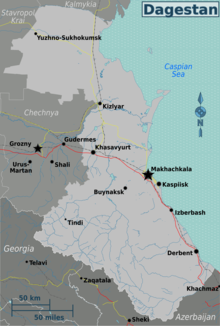

- 🌍 Makhachkala — capital and largest city
- 🌍 Akhty — a majestically set mountain aul with more tourist facilities than any other
- 🌍 Buynaksk — in central Dagestan in the foothills of the Greater Caucasus Mountains
- 🌍 Derbent — 5,000 year old walled city and UNESCO World Heritage site on the Caspian in southern Dagestan; a must visit for any traveller in Dagestan

- 🌍 Gimri — a small mountain village in the eastern (and therefore easiest to get to) section of Dagestan's mountainous region, with more history on view than in most villages.
- 🌍 Izberbash — an oil town and the largest urban district on the road between Makhachkala and Derbent
- 🌍 Khasavyurt — a relatively large city (for the region) near the border with Chechnya
- 🌍 Tindi — a small picturesque aul with a historic minaret in the mountains of southwestern Dagestan, near the Georgian and Chechen borders; probably not a safe area for travel
- 🌍 Kizlyar — a city near the border with Chechnya and Stavropol krai (region)
- 🌍 Yuzhno-Sukhokumsk — a city located is northwest Dagestan
Other destinations
- 🌍 Dagestansky Nature Reserve — comprised of the marshy Kizlyar Bay region (a bird watcher's paradise) and the desert Sarykum Sand Desert region
Understand
Dagestan shares with its Caucasian neighbours the towering mountains of the Greater Caucasus, rushing Caucasian rivers, and spectacularly situated stone auls, mountaintop villages. But in an already diverse region, Dagestan is a wonderland of ethnic and cultural diversity. About 35 separate ethnolinguistic groups live in this Scotland-sized republic and the region contains an amazing 12 language families. For all this cultural diversity, Dagestanis are fairly united in their Islamic religion — virtually all non-Russian ethnic groups are Muslim. This is probably true since almost 32,000 people have left in a mass exit from Dagestan since the fall of the Soviet Empire in 1991. Many of those people were the Mountain Jews—Juhuro—who spoke Persian or one of its dialects.
Get in
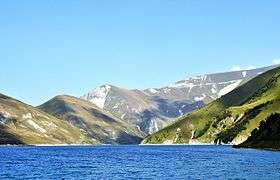
Makhachkala will almost certainly be your first destination, whether by plane from Moscow, or by train via Rostov-on-Don through Mineralnye Vody. Note that security is very tight at the Makhachkala airport.
Get around
Marshrutkas are the standard way of getting around the region, and will take you most anywhere you intend to go, but are not safe. Marshrutka travel along the coastal road between Makhachkala and Derbent would be the safest, relatively speaking, transport in the region, and probably the only route that (intrepid/reckless) travelers should brave. The twice-daily train between Makhachkala and Derbent is a better option.
Taking your own vehicle would be even less safe, as you would be an extra easy and obvious target for carjackings/kidnappings or awful interactions with corrupt officials. Hiking the mountainous regions would be a fantastic way to travel between villages and to enjoy Dagestan's striking natural beauty, if not for the extreme danger of kidnapping.
Talk
Within the seven language families of the Dagestanian language grouping (unrelated except by geography) alone there are about 30 languages, many of them considered among the most difficult in the world to master. Fortunately, everyone, regardless of nationality, understands the lingua franca, Russian. The indigenous Avar language, spoken by the largest single ethnic group, is the second lingua franca of the region. Azeri is also widely used in the southeast Caspian region around Derbent; those who speak Turkish may be able to make themselves understood in this area.
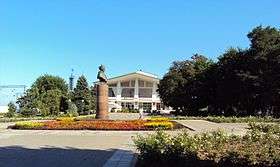
The five indigenous literary languages (and therefore the most rewarding to study) are the aforementioned Avar, as well as Lak, Dargwa, Lezgian, and Tabasaran. Avar is the most widespread, and there is an Avar Theater in Makhachkala devoted to performances of works in the language.
See
Derbent has Dagestan's main attraction in its ancient walled city, a UNESCO World Heritage site, and the single most important historical attraction in all of Southern Russia. Makhachkala isn't terribly interesting, and for a tourist, should be considered just a gateway to Derbent.
The mountains of southern and southwestern Dagestan, the high peaks of the Greater Caucasus, should be a principal attraction. Mountains topped with auls, small villages filled with stone houses and home to famed chivalric mountain tribes are as fascinating culturally as they are beautiful. But the conflict here between the indigenous Muslim people of the Caucasus has raged for some two hundred years, with a rare period of peace under the unifying political and ideological influence of the Soviet government, and the region today is perhaps more dangerous than it ever has been, with foreign extremist groups appearing in the mountain regions. All this amidst a brutal and more general response by the Russian military, determined to assert sovereignty over this perennially rebellious and lawless region. You don't want to get swept up in this conflict, and a visit to the mountains is the surest way to do that.
Do
Most activities of any interest, mainly cultural performances and sporting events, are to be found in Makhachkala.
Buy
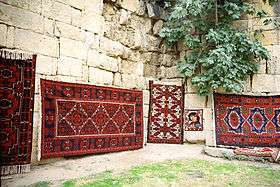
- Famed Dagestani rugs
- Beluga Caviar
- Traditional swords and daggers of the various ethnic groups
- Traditional hats and costumes
Eat
Dagestan is renown for its local dishes of: hinkal (a tasty pasta/dough-like entity served with garlic sauce and some kind of meat, usually young, boiled lamb), chudu (a quesadilla-like thin dough with special meats, cheeses or vegetables inside), and shashlik (roast shishkabab, usually lamb meat).
There are countless cafes serving Dagestani and Russian foods. A few, newer Chinese and Japanese restaurants have opened, but the food lacks authenticity and flavour. Western foods are likewise a scarcity, and there are no Western food chains anywhere in Dagestan. And don't be fooled by the many advertisements for 'pizza' — even by typical Russian standards, the pizzas lack the most basic ingredients of pizza: sauce, cheeses, etc. The closest you'll come to finding a real steak will be at the new El Gusto Cafe close the centre of Makhachkala, a delightful restaurant where you can find a few other Western dishes satisfactorily prepared. Like other former Soviet Union countries, customer service is largely lacking, and Dagestani culture adds to the experience the guarantee of waiting a very, very long time for your order.
In general unless you like traditional Dagestani dishes, which are delicious, you are unlikely to be impressed by the food in Dagestan.
Drink
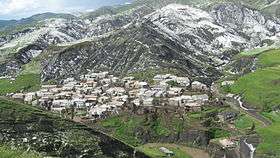
Drinking culture is indomitable, and so you'll have no problem getting a drink, be it in a house in a mountain aul or a cafe/bar in Derbent.
Sleep
The best developed facilities (still pretty basic) are in Makhachkala and Derbent, but you should be able to find guesthouse style lodging with little difficulty in any town or village. Despite the very real dangers that absolutely should deter sane tourists from visiting most parts of this region, the Dagestani peoples still retain their legendary chivalric hospitality, and will help you get set up.
Learn
- Dagestan State University — located in Makhachkala
- Dagestan State Technical University — located in Makhachkala
- Dagestan State Medical Academy, Makhachkala (formerly known as Dagestan State Medical Institute). Caters local and international students,mainly from southeast countries.
Work
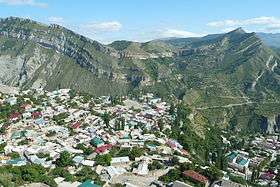
Stay safe
Dagestan is not a safe tourist destination by any stretch of the imagination. The mountainous areas of the republic (i.e., the most interesting areas) have seen major military operations in recent years between various groups and the Russian military. Criminal activity is widespread throughout the region, often targeting the few foreign tourists that do continue to visit for kidnapping, extortion, and worse. Dagestan shares along with the rest of the North Caucasus an extravagantly corrupt official culture and bribes and harassment are business as usual. However, it is generally the north of Dagestan that is actually safe to travel.
If you'd like to catch a glimpse of Dagestani culture and beauty, check online for a copy of the late Sergei Bodrov's haunting film, Prisoner of the Mountains (Кавказский пленник), which was shot in a Dagestani mountain aul, hiring the villagers as extras.
Stay healthy
Respect
Dagestan is a predominantly conservative Muslim region with very strong chivalric mountaineer traditions. Be careful not to insert yourself into local politics or to insult locals' sense of honour, or you might find yourself estranged (i.e., shot) in a strange land.
Connect
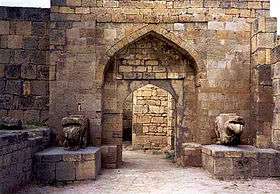
Mobile
In Dagestan there are four GSM operators (MTS, Beeline, Megafon, Dagestanskaya Sotovaya Svyaz') and two 3G-UMTS operators (Megafon, Beeline), and they often have offers that give you a SIM card for free or at least very cheap. If you are planning to stay a while and to keep in touch with Dagestani and other North-Caucasian peoples, then you should consider buying a local SIM card instead of going on roaming. If you buy a SIM card from a shop you'll need your passport for identification. It only takes five minutes to do the paperwork and it will cost less than $US10.
Embassies and Consulates
Visitors should know that there are no embassies or consular services in Dagestan, with the most convient likely to be in distant Moscow.
Go next
Just across the border with Georgia is the breathtakingly gorgeous region of Tusheti, but the border is for all intents and purposes closed, so the route to Georgia becomes extremely long and indirect via plane. Georgia is the place to be, though, to safely experience the sort of romantic, chivalric Caucasian mountain cultures that would be an attraction in a safer Dagestan.
The border with Azerbaijan was until recently open only to CIS passport holders. It has reopened in 2015 for non-CIS passport holders, but regardless, it is reputedly a very bad experience. However, Northeastern Azerbaijan is a wonderful place for treks in forest covered mountains.
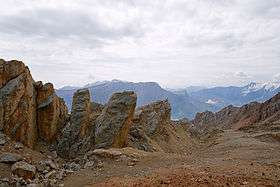
The most obvious next destination would be Chechnya, with its shared culture, proximity, and similarly beautiful mountainous landscapes, but anything interesting there is far too dangerous to visit. If you are in Dagestan, best to leave via the airport in Makhachkala.